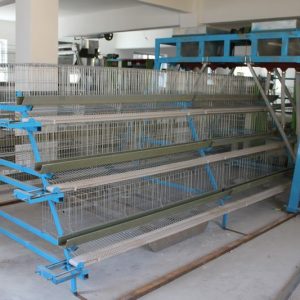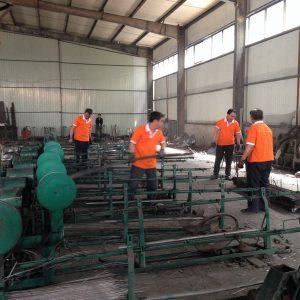
poultry cage feeders
poultry cage feeders Chicken farming is the largest and fastest growing in the poultry farming industry, and it is also the earliest developed farming industry. For the poultry farming industry, chicken farming has a very good advantage compared to other poultry farming industries. At present, almost domestic chickens are raised in rural areas in my country, and large-scale chicken farms are constantly developing and establishing. However, rural retail households have the largest scale and the largest number of chickens. In rural chickens, chicken coops do not have too many requirements and do not have too many mechanical equipment. Let’s analyze the common construction methods of chicken coops in rural retail households.
1. Type of chicken house
There are two types of common chicken houses: open chicken houses and closed chicken houses. Open chicken houses are generally used for individual farmers with relatively small chicken scales, and closed chicken houses are generally used for small and medium-sized chicken farms.
1. Open chicken coop
The most common form of open chicken coops has walls on all sides, with large windows on the south wall and small windows on the north wall. All or most of these chicken houses rely on natural ventilation and natural light, and the temperature and humidity in the house basically change with the season. This type of chicken house often requires additional ventilation and lighting equipment to supplement the lack of ventilation and lighting under natural conditions.
2. Closed chicken house
Closed chicken house is also called windowless chicken house. The roof of the house is well insulated from the four walls, there are no windows on all sides, and the environment in the house is adjusted manually or by instruments. Artificial ventilation and lighting are used in the chicken house, and the temperature, humidity and air composition in the house are controlled by changing the amount of ventilation.
Second, the structural requirements of each department of the chicken house
Regardless of whether it is an open chicken house or a closed chicken house, the construction structure requirements are relatively strict. Let’s talk about some structural requirements for common chicken house construction.
Foundation and ground: The foundation should be deep and strong. The ground should be higher than the outside of the house, moisture-proof, flat, and easy to clean and disinfect.
Wall: good heat insulation performance, can protect against external wind and rain. Use bricks or stones to build up the walls. Use cement to wipe the joints on the outside of the wall, and use cement or white ash on the inside to prevent moisture and scouring.
Roof: In addition to the single-pitch roof for small chicken coops with a small span, generally double-pitch roofs are used.
Doors and windows: The door is generally located in the south of the chicken house. Generally, a single door is 2 meters high and 1 meter wide; two doors are 2 meters high and 1.6 meters wide. The windows of the open chicken house should be installed on the front and rear walls, and the front windows should be wide and low from the ground to allow for light.
The ratio is 1:10-18; the rear window is smaller, with an area of about 2/3 of the front window, and is higher from the ground to facilitate summer ventilation. Airtight chicken coops have no windows, only emergency windows and ventilation holes.
Coop span, length and height: The span of the chicken coop depends on the form of the roof of the coop, the type of coop and the feeding method. Generally, the open coop is 6-10 meters and the closed coop is 12-15 meters. The length of the chicken house generally depends on the span of the chicken house and the degree of mechanization of management. A chicken house with a span of 6-10 meters is generally 30-60 meters long; a chicken house with a larger span such as 12 meters is generally 70-80 meters long. A chicken house with a higher degree of mechanization can be longer, but generally should not exceed 100 meters.
The height of the chicken house should be determined according to the feeding method, manure removal method, span and climatic conditions. In areas with small spans, dry farming and low temperature, the chicken house does not need to be too high. Generally, the eaves of the chicken house are 2-2.5 meters; for large-span, multi-layer cages, the height of the chicken house can reach about 3 meters, or The uppermost chicken cage is preferably 1-1.5 meters away from the roof; if it is a high-bed closed chicken house, the height is generally 4.5-5 meters due to the lower part of the manure pit.
Operation room and walkway: The operation room is where the breeder operates and stores tools. If the length of the chicken house is less than 40 meters, the operating room can be located at one end of the chicken house; if the length of the chicken house exceeds 40 meters, it should be located in the center of the chicken house. The position of the walkway depends on the span of the chicken house. When the span of the flat chicken house is small, the walkway is generally set on one side of the chicken house, with a width of 1-1.2 meters; when the span is greater than 9 meters, the walkway is set in the middle with a width of 1.5-1.8 meters. In order to feed the material with a trolley. The aisle of caged chicken coops, no matter how large the span of the chicken house, should be determined by the arrangement of the chicken coops. Generally, the aisle between chicken coops is 0.8-1 meters wide.


